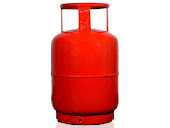Volatile crude prices
Volatile crude prices to hit investments in oil, gas
Global investments in oil and gas are headed to face turmoil. It has seen a
sharp fall in 2008 and till the last reports came in for 2009, many of them
are expected to go bad. Recession and lack of financing apart - if oil
prices do not stabilise, new investments will fall and many of those, which
are already in the pipeline, will not see the end of tunnel very soon.
Investment in oil is being adversely hit by volatility in oil prices. The
oil prices have turned increasingly and rather unduly sensitive to market
demand, supply and stock positions, and to put it more precisely the rumours
and speculations about them. The oil price indices are not necessarily
reflective of the real market conditions and with multiple of them running,
the spot market provides huge arbitrage opportunities making things worse.
It is possible that large international oil companies or the national oil
companies are in a position to absorb the shock created by extraordinary
changes in the market conditions and overcome and withstand the inefficiency
created by such speculation-driven consequences in the market. But, not the
small players, for sure.
It is also difficult to expect the large international oil companies and
cash-rich national oil companies to remain calm about it and go ahead with
their upstream investments such as those in exploration and prospecting.
They have also been hit hard both by the recession and the political issues
in many nations where investments have already been made rare planned to be
made. They may be better placed in the capital market to mobilize resources,
but the investors are wary of the prospects of oil prices, especially if
they believe that the same may remain below $80 a barrel on the average for
a long time, they may also not jump into oil so easily.
After all, while from most of the conventional assets, one can deliver oil
at $15-30 a barrel, the costs may rise
to$60forseveralnewprojectsandcon-sidering the investments they are often
forced to make on building infrastructure in economically backward areas
where oil resources are being explored and pay taxes at steep levels, a
price below $80 is certainly a risky proposition for investments in new
upstream oil assets.
When the oil prices rose sharply till the middle of last year, fight for oil
resources went up in the same proportion. The investments in both
conventional and non-conventional oil and gas assets saw increases in
multiple levels driven also by national energy security concerns of
countries which are expected to remain dependent on imported oil. Such as
China. Today, with oil prices down to below $80 levels (or around that) from
the peak of about $145 last year, investments made in most of these assets
in the past are proved burdensome. While the larger oil companies have been
managed to sit pretty with them, the small and mid size players are in real
trouble.
There is, in fact, nothing to worry about the long-term prospects of oil and
gas demand. The problem lies in the immediate and short-term scenario, where
oil demand is likely to remain tightly range bound for another year or so.
The global oil demand has been estimated to grow to 116.3 million barrels a
day by 2030 from the current levels of about 84 mb/day.
The investments made in all segments of the oil industry and those, which
are being planned right now, have the potential to maintain a huge excess
capacity in the industry for a long time. The Opec policy of maintaining a
spare capacity "strategically" will also not facilitate new investments by
others, however good they might look at the first sight. With gradual and
large capacity expansions and maintaining a moderate oil price regime, the
Opec may be able to discourage high cost investments in new conventional or
non-conventional areas, mainly to maintain their oligopoly position in the
market.
The global oil market for both crude and refined products are turning
increasingly complex with issues such as geopolitics, logistics, capital
investments trends, uneven course of economic development and diverse
regional trends in economic recovery post recession.
This will also adversely hit the free will of oil companies to invest
anywhere and everywhere thinking that oil resources are the safest bets
considering the long-term energy security concerns of the parent nations.
Today, politics playing above pure economics of oil exploration and
refining, even the cash rich companies seeking their national interests will
have to follow a different approach to acquire these assets.
More importantly, not all the assets talkedaboutare as attractiveasthey are
made out to be. They will be proved risky at current swings in the market.
By A. S. Firoz, Financial Express, New Delhi, 27 November 2009




